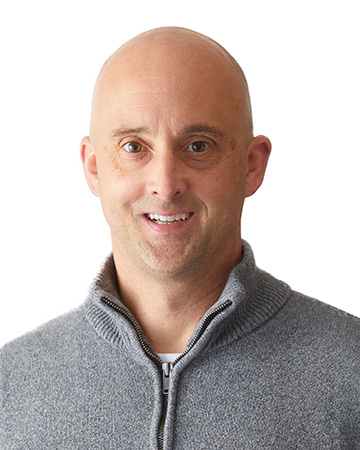Profile for Todd Weaver

Contact me
Todd Weaver
Pronouns: He/Him/His
Professor
Chemistry & Biochemistry
University of Wisconsin-La Crosse
Todd Weaver Pronouns: He/Him/His
Professor
Chemistry & Biochemistry
Specialty area(s)
Biochemistry
Molecular Biology
Structural Biology
Enzymology
Brief biography
I am a first generation college student who graduated from UWL and earned a B.S. in microbiology with a chemistry minor. Following UWL, I worked for a year at Fort Detrick in Frederick, MD as a protein biochemist. It was during this time period that my interest in structural biochemistry developed. At Fort Detrick I was responsible for isolating HIV reverse transcriptase, which is the viral enzyme responsible for converting the HIV RNA genome to DNA.
After a year at Fort Detrick I entered the University of Minnesota Biochemistry, Biophysics and Molecular Biology Ph.D. program. I was hired to join the UWL Department of Chemistry & Biochemistry in 1998.
As a trained structural biochemistry I have a fundamental interest in the structure-function paradigm. Inherently this paradigm infiltrates all aspects of life. Instructionally, I enjoy connecting basic human processes to atomic details.
Current courses at UWL
CHM 418: Biochemistry II
CHM 419: Advanced Biochemistry Lab
Education
Ph.D. Biochemistry (1996) Molecular Biology, Biophysics, University of Minnesota
B.S. (1990) Microbiology (Honors), University Wisconsin - La Crosse
Career
Teaching history
CHM 250: Introduction to Organic and Biochemistry
CHM 325: Fundamental Biochemistry
CHM 417 Biochemistry I: Macromolecules
CHM 418: Biochemistry II: Metabolism and Genetic Information
CHM 419: Advanced Biochemistry Lab
Professional history
I graduated from UWL as a first generation college student with major in microbiology and a minor in chemistry. Upon graduation from UWL I worked for a year at Fort Detrick, which is a US Army Command Installation located in Frederick, MD. Fort Detrick was the location for the U.S. biological weapons program and is now the location for the biological defense program. Fort Detrick has been featured in a number of TV shows and movies, including the 2019 mini-series "The Hot Zone". This mini-series centered upon an ebola outbreak at a research facility in Reston, VA and tissue samples from affected crab-elating macaque monkeys were analyzed at Fort Detrick. Luckily, this form of ebola was deemed non-pathogenic to humans.
My career interest in protein structure-function started at Fort Detrick (https://www.military.com/base-guide/fort-detrick (Links to an external site.)). My primary role at Fort Detrick was to purify HIV reverse transcriptase (HIV RT). This enzyme allows HIV, a retrovirus, to synthesize DNA from its own RNA genome. HIV RT was the first enzyme targeted by the anti-retroviral azidothymidine or AZT. As a thymidine analogue, AZT arrests viral DNA synthesis and slows viral replication. The purified HIV RT we provided to a group of structural biologists at Rutgers University was used to solve the 3D structure in 1996 (https://www.rcsb.org/structure/1UWB). (Links to an external site.)
After Fort Detrick I earned my Ph.D. from the University of Minnesota in Biochemistry, Biophysics and Molecular Biology (https://cbs.umn.edu/academics/departments/bmbb/graduate-program/about-graduate-program (Links to an external site.)). My focus in graduate school was the 3D structural determination of fumarase, a Krebs Cycle enzyme (https://www.rcsb.org/structure/1FUO (Links to an external site.)).
I started at UWL in 1998 and helped establish our Biochemistry Major almost 20 years ago. I have an active research group and collaborate with a number of students and faculty on two structure-function related projects, including (1) fumarase - a central metabolic enzyme and (2) hemolysin - a Gram-negative produced hemolytic toxin. Our most recent fumarase results noted the importance of loop conformational change and enzyme function (https://febs.onlinelibrary.wiley.com/doi/abs/10.1002/1873-3468.13603 (Links to an external site.)), while our most recent hemolysin A contribution correlated proteolysis and protein dimerization (http://scripts.iucr.org/cgi-bin/paper?S2053230X17002102 (Links to an external site.)).
The best way to contact me is via email at tweaver@uwlax.edu. The best hours to reach me are between 8 am - 4 pm from M - Fr. I will do my best to provide an email response the day your message is sent.
Research and publishing
*Stuttgen, G. M., *Grosskopf, J.D., *Berger, C.R., May, J.F., Bhattacharyya, B., and Weaver, T.M. (2019) Closed fumarase C active site structures reveal SS Loop residue contribution in catalysis. FEBS Letters. https://doi.org/10.1002/1873-3468.13603
Bulku, A., Weaver, T.M., and Berkmen, M.B. (2018) Biochemical characterization of two clinically-relevevant human fumarase variants defective for oligomerization. The Open Biochemistry Journal. https://doi.org/10.2174/1874091x01812010001
*Wimmer, M.R., *Woods, C.N., *Adamczak, K.J., *Glasgow, E.M., Novak, W.R.P., Grilley, D.P., and Weaver, T.M. (2015) Sequential unfolding of the hemolysin two-partner secretion domain from Proteus mirabilis. Protein Science. https://doi.org/10.1002/pro.2791
Weaver, T., *Hocking, J., Bailey, L., *Wawrzyn, G., Howard, D., Sikkink, L., Ramirez-Alvarado, M., and Thompson, J. (2009) Structural and Functional Studies of Truncated Hemolysin A from Proteus mirabilis. Journal of Biological Chemistry. https://doi.org/10.1074/jbc.m109.014431
Estevez, M., *Skarda, J., *Spencer, J. Banaszak, L., and Weaver, T. (2002) X-ray crystallographic and kinetic correlation of a clinically observed human fumarase mutation. Protein Science. https://doi.org/10.1110/ps.0201502
*denotes undergraduate student co-author
Kudos
published
published
published
published



